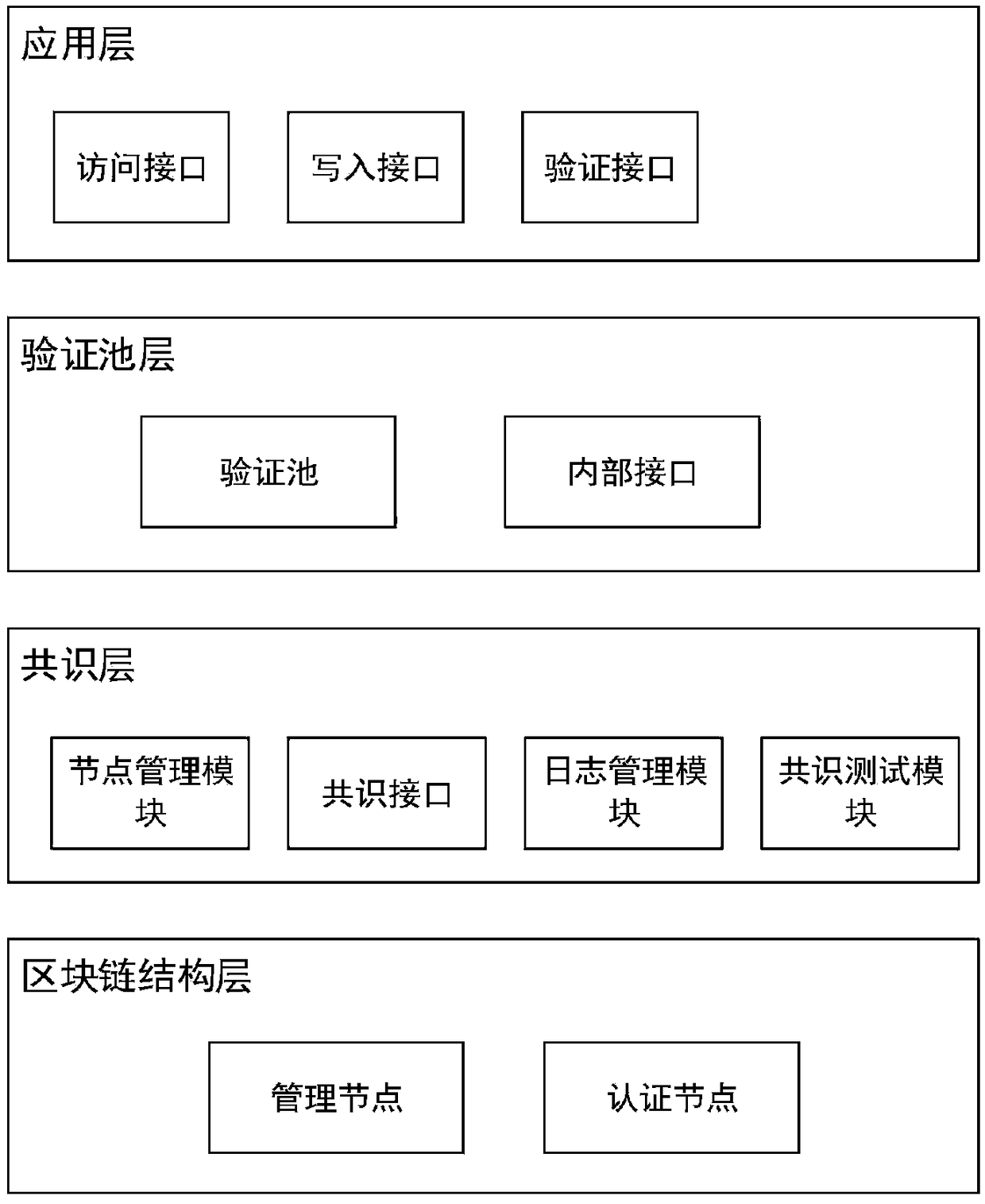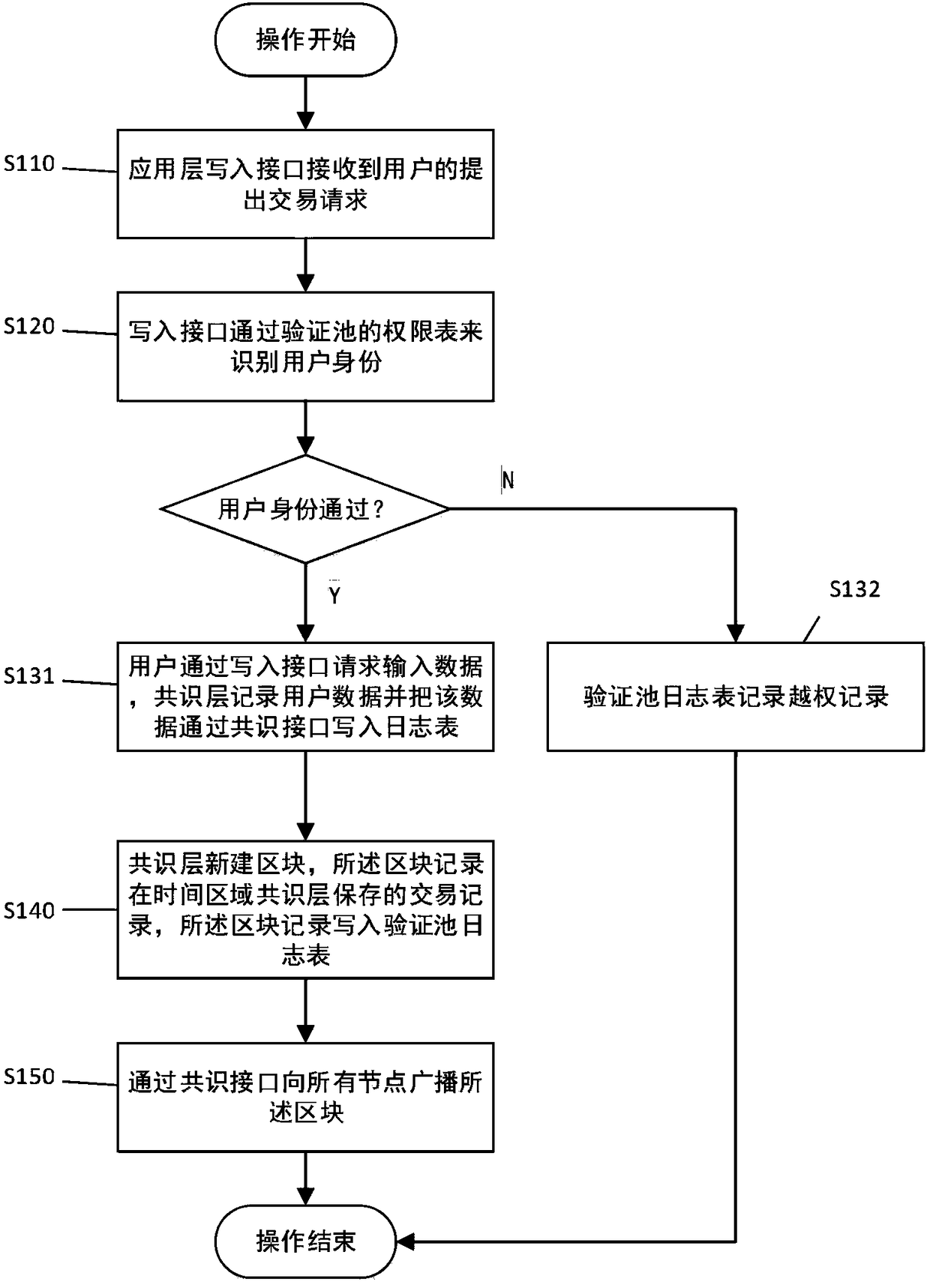Quick verified pool, quick verified system and operating method base on blockchain
A verification system and blockchain technology, applied in the field of fast verification systems and fast verification pools, can solve the problems of long verification time, a large amount of consensus verification time, and the inability to solve the needs of fast verification, and achieve the effect of improving verification speed.
- Summary
- Abstract
- Description
- Claims
- Application Information
AI Technical Summary
Problems solved by technology
Method used
Image
Examples
Embodiment 1
[0055] A fast verification pool based on blockchain, including:
[0056] The authority table is used to save the user key and the corresponding policy tree to the node, and provide the authentication scheme. The identity verification scheme adopts an attribute-based encryption algorithm, which may specifically be a CP-ABE algorithm.
[0057] The log table is used to save the input data and block records submitted by the user in the process of proposing a transaction. The input data includes but not limited to transaction information, access policy and version number; the block record refers to the transaction record saved by the consensus layer in the time zone of the new block record.
[0058] The consensus table is used to record the consensus result when more than 51% of the nodes on the node network believe that the information is correct after receiving the broadcast information from the verification pool. The consensus result of a round of consensus calculation will be...
Embodiment 2
[0075] A blockchain-based fast verification system comprising the fast verification pool described in the scheme in Embodiment 1, comprising:
[0076] Application layer, including user-oriented access interfaces, such as access interface, verification interface and write interface. The access interface allows node users to access the consensus table and log table in the verification pool layer through the access interface at the application layer. The verification interface allows node users to perform authority verification through the verification interface at the application layer, and at the same time supports rapid verification of whether the transaction information is complete or has been tampered with. The write interface allows node users to submit data and create blocks through the write interface at the application layer, and the data can be collected through the Internet of Things technology. The application layer can call the write interface of the fast verificati...
Embodiment 3
[0083] A method of operating a blockchain-based fast verification system as described in Embodiment 2, comprising:
[0084] Propose a transaction operation method, a verification transaction operation method and a stop transaction operation method.
[0085] As a further optimized solution, the proposed transaction operation method includes the following steps:
[0086] S110: The application layer writing interface receives the transaction request from the user;
[0087] S120: The writing interface identifies the user identity by verifying the authority table of the pool, and if the user identity passes, execute S131, otherwise execute S132;
[0088] S131: The user requests input data through the writing interface, the consensus layer records the user data and writes the data into the log table through the consensus interface, and executes S140;
[0089] S132: Verify that the pool log table records the unauthorized record, and then the operation ends;
[0090] S140: The cons...
PUM
 Login to View More
Login to View More Abstract
Description
Claims
Application Information
 Login to View More
Login to View More - R&D
- Intellectual Property
- Life Sciences
- Materials
- Tech Scout
- Unparalleled Data Quality
- Higher Quality Content
- 60% Fewer Hallucinations
Browse by: Latest US Patents, China's latest patents, Technical Efficacy Thesaurus, Application Domain, Technology Topic, Popular Technical Reports.
© 2025 PatSnap. All rights reserved.Legal|Privacy policy|Modern Slavery Act Transparency Statement|Sitemap|About US| Contact US: help@patsnap.com



